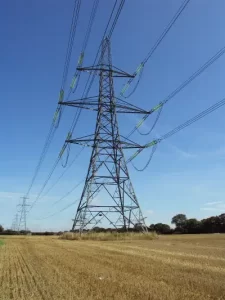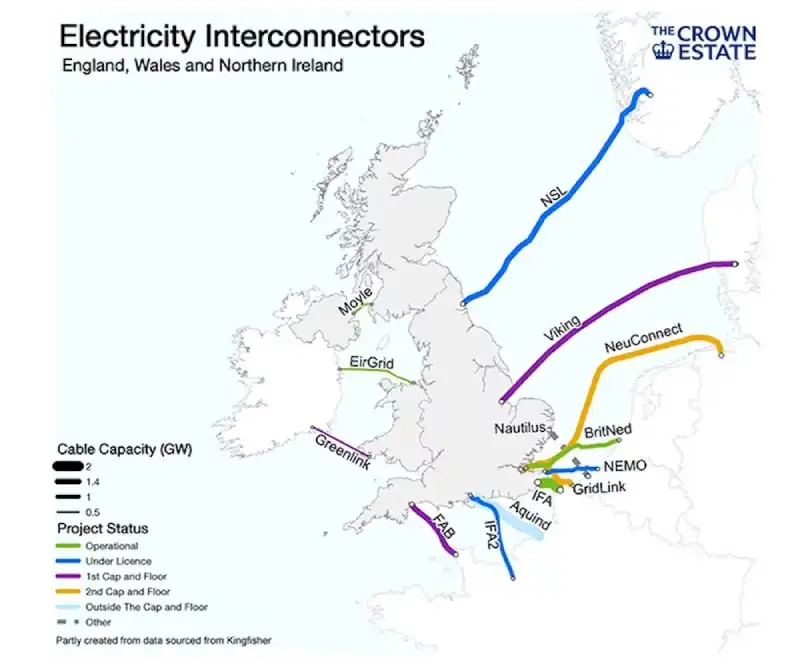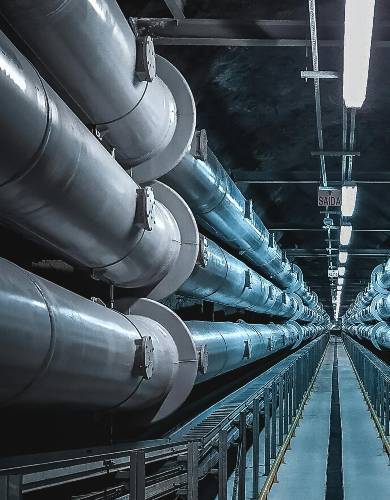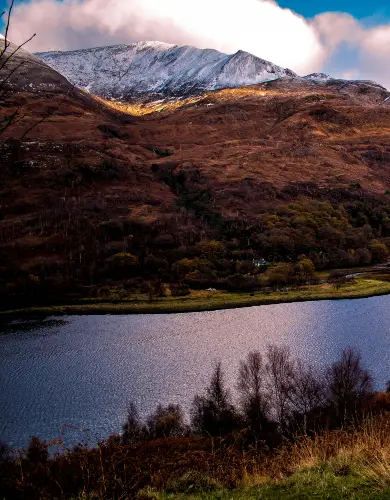What is the National Grid?
British energy infrastructure faces significant challenges over the coming years, with the transition to renewables accelerating while the government applies increased pressure to reduce consumer costs.
The national grid is key to British energy infrastructure, allowing a seamless transmission of electricity long distances from where it is generated to where it is needed.
In this guide, we’ll learn more about this crucial infrastructure, the challenges ahead and how it affects energy bills.
Contents
- What is the national grid?
- A brief history of the national grid
- Who owns the national grid?
- How does the national grid work?
- What is the future of the national grid?
- AquaSwitch comparison
What is the national grid?
The national grid is a high-voltage electric power transmission network across Great Britain that connects power generators with local electricity distribution networks.
The network uses high-voltage cables that can transfer electricity across long distances with only minor losses in power. The majority of the national grid is above ground and is characterised by the high-tension lines that crisscross across the nation.

Note that the national grid is owned and operated by The National Grid Plc, the company, that also has multiple other roles within the UK’s electricity market.
Broadly speaking, there are three key infrastructure that connect directly to the national network of high-voltage transmission lines:
Electricity interconnectors

International interconnectors are undersea cables that import electricity from surrounding countries.
There are currently eight interconnectors in operation, importing and exporting electricity across borders, broaderning the market for generators, trafers and large consumers.
Here is a list of those eight:
| Name | Developers | Connection to | Capacity (GW) | Commission date |
|---|---|---|---|---|
| IFA | National Grid, RTE | France | 2.00 | 1986 |
| Moyle | Mutural Energy | Ireland | 0.50 | 2002 |
| BritNed | National Grid, TenneT | Netherlands | 1.00 | 2011 |
| East-West | EirGrid | Ireland | 0.50 | 2012 |
| Nemo Link | National Grid, Elia | Belgium | 1.00 | 2019 |
| IFA-2 | National Grid, RTE | France | 1.00 | 2021 |
| North Sea Link | National Grid, Stattnet | Norway | 1.40 | 2021 |
| ElecLink | Gerlink | France | 1.00 | 2022 |
Additionally, there is another seven that are either confirmed or highly likely to come into fruition over the next couple of years:
| Name | Developers | Connection to | Capacity (GW) | Commission date |
|---|---|---|---|---|
| Viking Link | National Grid, Energinet | Denmark | 1.40 | 2023 |
| Greenlink | Element Power, Partners Group | Ireland | 0.50 | 2023 |
| Gridlink | iCON Infra Partners | France | 1.40 | 2024 |
| NeuConnect | Meridian, Allianz, Kansai | Germany | 1.40 | 2024 |
| NorthConnect | Agder, Lyse, E-CO, Vattenfall | Norway | 1.40 | 2025 |
| FAB Link | Transmission Inv., RTE | France | 1.40 | 2025 |
| Xlinks | Intertek, Octopus | Morocco | 3.60 | 2027 |
British power stations
Power stations across the UK generate electricity. The National Grid moves the electricity generated from the power stations to where it is needed.
In Britain, the national grid connects to the highest-capacity power generators:
- Wind Farms – Both onshore and offshore; across the country.
- Gas-Fired Power Stations – Located across the country.
- Drax biomass power station – the UK’s largest power station
- Nuclear Power Stations – In several locations on the British coastline.
Regional Network operators
The national electricity network is similar to the national road network. Using these as an analogy:
- the national grid is the motorway network connecting key locations at a national scale (operated by The National Grid Plc).
- the regional grid are the dual carriageways connecting medium-sized towns (operated by regional network operators).
- the local grid are the small local roads connecting villages and suburbs (operated by independent local operators).
This means that the national grid ends when the electricity is “stepped down” to be transmitted at a lower voltage across regional networks, which are separate as per the road analogy.
This stepping down happens again when electricity is transmitted into local grids until the voltage arrives to homes and businesses at the desired voltage of 230V, which we get in our mains plugs.
A brief history of the national grid
Before the 20th century, the UK power network consisted of a patchwork of regional supply networks. Small networks each required their own power source, making them highly inefficient. In a connected network, surplus power in one area can be used by an area experiencing shortages, making it significantly more resilient.
It took until 1938 for the national grid to be created, consisting of 4,000 miles of overhead cables connecting the country’s 122 highest-output power stations.
The new grid proved its worth during the Blitz, where shortages in London caused by the damaged Battersea Power Station were substituted with electricity generated in South Wales.
In the proceeding eighty years, the grid has been continually expanded and improved as the energy needs of Britain changed over time.
Who owns the national grid?

The National Grid is owned by National Grid Plc, a multinational electricity and gas utility company headquartered in London.
National Grid Plc owns several electricity and gas network assets across the UK and the US. As of July 2022, National Grid Plc had a market capitalisation of £40 billion and listed in the London Stock Exchange.
Additionally, the group also owns The National Grid Electricity System Operator who is in charge of keeping a balanced electricity supply across the country.
How does the national grid work?
The national grid efficiently moves electricity around the country using high-voltage cables. Transformers convert generated electricity up to 400,000 volts.
High Voltage electricity has the property of being able to move long distances along cables with only minor losses of power.
Most of the national grid uses electricity pylons to safely isolate the high-voltage cables from roads, railway lines and people.
The power is then transformed back down to 33,000 volts when transmitted to regional networks.
What is the future of the national grid?
The two biggest challenges facing the National Grid are the UK’s transition to green energy and the rising wholesale cost of energy facing electricity users.
Let’s look at each in turn:
The UK’s net-zero transition
So far, the UK has heavily relied on fossil fuels and nuclear to produce electricity for the nation.
Nuclear is an inflexible yet reliable baseload energy that is always covering a vast chunk of demand, while the power output of fossil fuel power stations (gas in particular) can be easily adjusted to fine-tune supply and keep an efficient and well-balanced grid.
However, this is no longer viable as the UK needs to reduce its emissions to net-zero by 2050 in order to mitigate against climate change. A crucial part of the plan is to reduce the UK’s reliance on fossil fuels by increasing green energy capacity.
The main issue is that there is so much partisanship to this energy transition that so far it has been chaotic at best. Gas storage was rapidly phased out, and the large increase in intermittent renewable energy like wind and solar has not been accompanied by the much-needed energy storage solutions.
The issue is that intermittent renewables are NOT like gas power stations: they cannot fine-tune their power output but instead are dependent on weather conditions and any excess power produced during favourable weather is lost if demand is low at that time.
This not only makes the grid operator’s (also part of the National Grid Plc) job more expensive (more uncertainty means that more power must be purchased -or imported- at the last minute) but also more difficult.
Cost reductions
In 2022, the cost of electricity and gas skyrocketed. Ofgem, the energy regulator and the government are focused on driving down network costs to tame inflation.
The regulator plans to deliver cost reductions by pushing network operators, including National Grid Plc, to deliver a more efficient service. Learn more about Ofgem’s plans here.
AquaSwitch comparison
The job of the national grid is fascinating, to say the least, and its performance directly affects UK business electricity prices. We hope that this article helps you realize just how much work goes on to deliver reliable electricity and that prices, performance, and sustainability are seldom as simple as many of the papers make them seem!
Meanwhile, if you are looking to save costs by comparing the rates and services of the different commercial energy suppliers and business gas suppliers, give our services a try:

